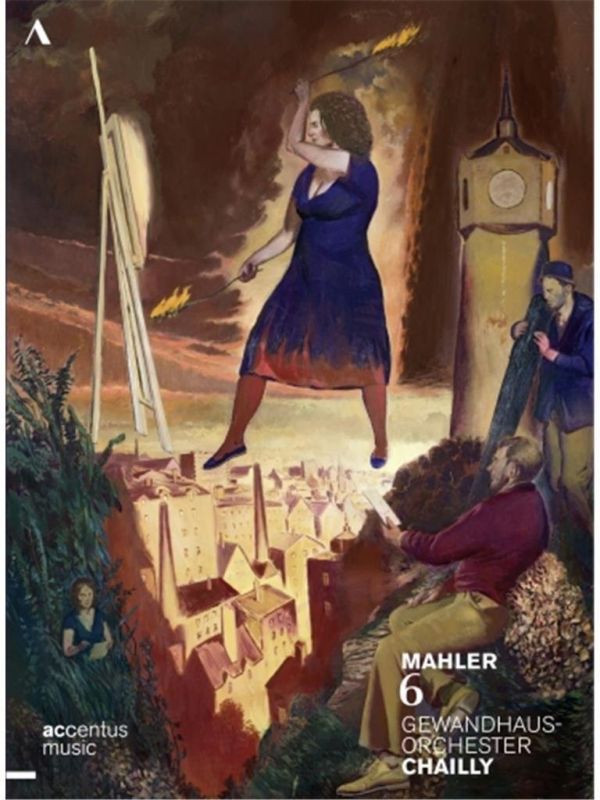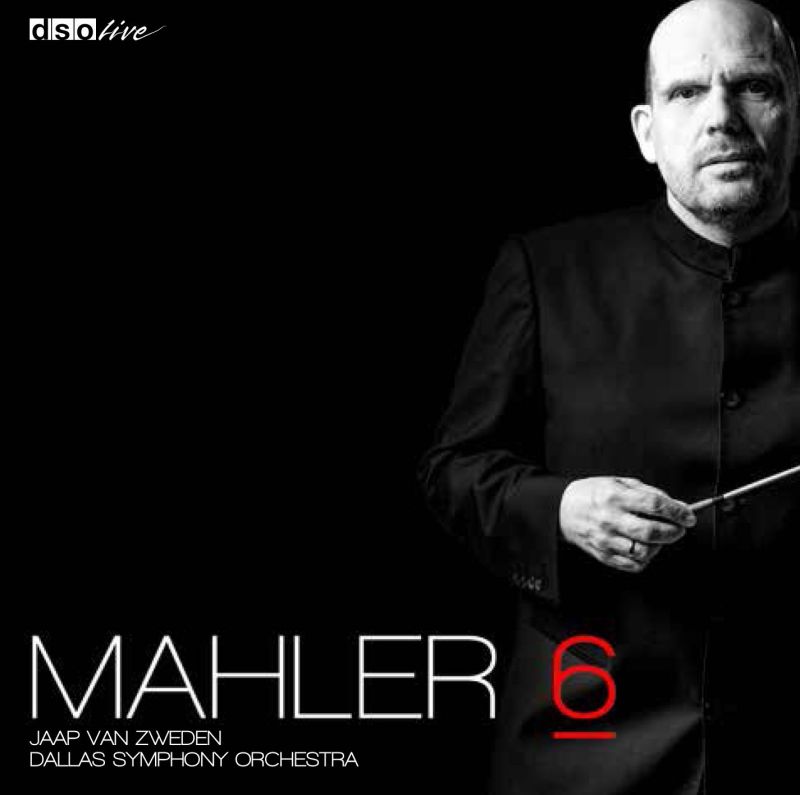MAHLER Symphony No 6 (Chailly & Van Zweden)
View record and artist detailsRecord and Artist Details
Composer or Director: Gustav Mahler
Genre:
Orchestral
Label: Accentus
Magazine Review Date: 03/2014
Media Format: Digital Versatile Disc
Media Runtime: 86
Mastering:
DDD
Catalogue Number: ACC20268

Tracks:
| Composition | Artist Credit |
|---|---|
| Symphony No. 6 |
Gustav Mahler, Composer
Gustav Mahler, Composer Leipzig Gewandhaus Orchestra Riccardo Chailly, Conductor |
Composer or Director: Gustav Mahler
Genre:
Orchestral
Label: DSO LIVE
Magazine Review Date: 03/2014
Media Format: CD or Download
Media Runtime: 78
Mastering:
DDD
Catalogue Number: DSOL5

Tracks:
| Composition | Artist Credit |
|---|---|
| Symphony No. 6 |
Gustav Mahler, Composer
Dallas Symphony Orchestra Gustav Mahler, Composer Jaap Van Zweden, Conductor |
Author: David Gutman
It is Chailly who impresses most here, not that his radical rethink will satisfy everyone. Admirers of his audio recording (Decca, 11/90) may well feel betrayed by what amounts to an interpretative volte-face on several fronts. An accompanying bonus feature, also containing rehearsal footage, examines some of these decisions in a ‘panel discussion’ with Reinhold Kubik. Chailly freely admits to dumping the Mengelberg tradition which obsessed him in Amsterdam. As in Beethoven and Brahms he now favours faster tempi, cleaner textures and a certain technocratic rigidity – the package generally deemed ‘authentic’ in our own time. For Kubik, sounding off about the disputed order of the middle movements, the officially endorsed Scherzo-Adagio sequence dominant from 1960 until 2010 was simply wrong. A few conductors – Barbirolli and Rattle spring to mind – were never convinced and did not wait for establishment scholars to tell them what to do. Nowadays the boot is on the other foot and it is becoming rarer to hear the Scherzo placed second, the arrangement preferred by Jaap van Zweden in Dallas. That Chailly has changed his mind on an issue which can divide the most musical of families is fair enough; but why does he believe that doing so gives him carte blanche to charge through the Scherzo like a bull in a china shop? In the first movement he has abandoned Barbirolli’s world-weary non troppo for Bernstein’s briskly energised march, although there the change is less extreme.
On the plus side, the playing of Chailly’s Gewandhaus Orchestra is unarguably superb and it is fair to say that not even Abbado or Boulez reveal more in the way of instrumental substrata. Mahler’s rural interludes glisten in decidedly novel fashion, sounding as much like Berio as Bruckner. Chailly follows Bernstein’s intuition (or more likely the letter of the latest critical edition of the score) in italicising and dragging out the most nightmarish outbursts of horns and trumpets in the finale’s slow introduction. Elsewhere the heavy drapes are swept aside and a brightly etched, lean-toned classicism edges out the sinister and the shadowy. While the composer might have recognised the orchestral seating plan and the antiphonal violins, he would surely have been amazed by the distinctly un-Teutonic results Chailly achieves with his German orchestra.
Jaap van Zweden, the prodigious violinist turned conductor who could well have been leading the not yet Royal Concertgebouw in Chailly’s earlier CD version, has been making a big success of his Texan appointment. Alas, his own reading is scarcely the revelation I was hoping for. There is of course some beautifully moulded string-playing – Chailly’s lines, forensically clean as they are, can seem oddly flat. Less happily, the Dallas trumpets are a weak link and the acoustic too woozy to project a consistent image of the orchestra. We seem to have a poorish seat a fair distance from the band. By contrast, the finale’s notorious hammerblows – two rather than three (let alone the original five) under both conductors – do sound pretty sensational. Chailly’s specially constructed wooden soundbox and accompanying giant mallet look rather silly and fail to make the same kind of auditory impact. Perhaps they were not meant to do so. That there is no concluding applause in Dallas may come as a relief too. In Leipzig the ecstatic ovation is surely presented at excessive length. Still, those who enjoyed Chailly’s previous audio-visual accounts of the Second and Eighth (Accentus, 1/12) and in particular his similarly conceived Fourth (Accentus, 8/13) will not be put off. This new DVD is sonically top notch, decently filmed and idiosyncratically topped off by the artwork of Neo Rauch featured throughout the series. It’s a sensational package in its way, available as a DVD or Blu-ray.
Discover the world's largest classical music catalogue with Presto Music.

Gramophone Digital Club
- Digital Edition
- Digital Archive
- Reviews Database
- Full website access
From £8.75 / month
Subscribe
Gramophone Full Club
- Print Edition
- Digital Edition
- Digital Archive
- Reviews Database
- Full website access
From £11.00 / month
Subscribe
If you are a library, university or other organisation that would be interested in an institutional subscription to Gramophone please click here for further information.




